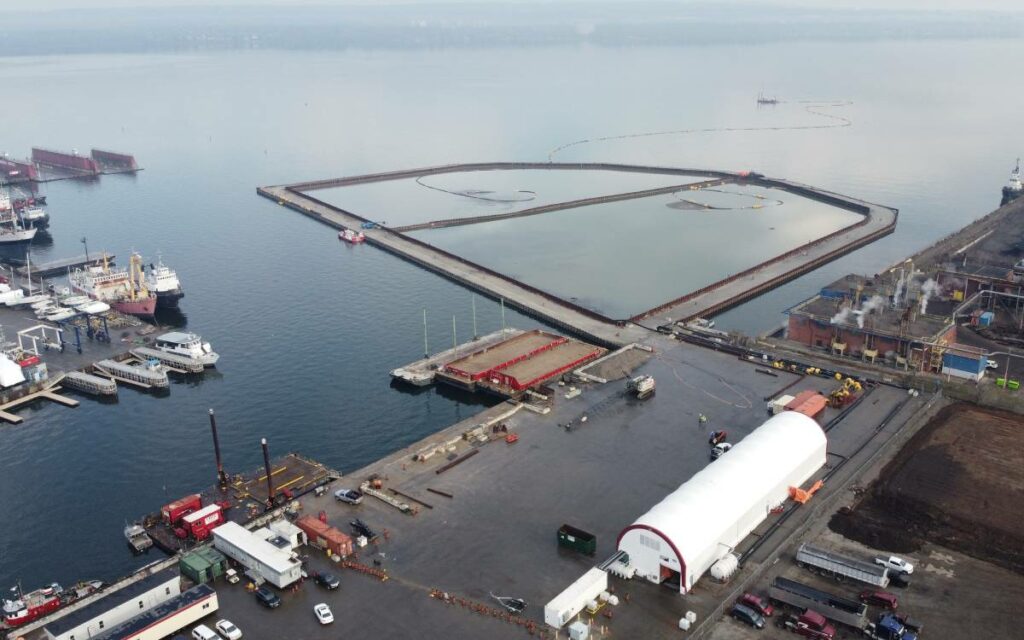
Hamilton’s Randle Reef. Photo credit: Twitter/Environment Canada
Randle Reef, located in the Hamilton Harbour, is undergoing a large clean-up of century-old industrial pollution.
On March 9, seven public-private entities, including local steel manufacturer Stelco, announced stage two completion of the Contaminated Sediment Remediation Project.
About three hockey rinks full of contaminated sediment was withdrawn and isolated in stage two of the project. However, not all polluted sediment was removable, with some having to be sealed in place with an isolation cap.
During the process, both water and air quality were monitored, and water contaminated upon sediment removal was also processed through an engineered pop-up treatment facility.
On hand for the announcement Wednesday, Hamilton mayor Fred Eisenberger said, “Collecting and containing the contaminated sediment is a key step in the remediation of Randle Reef and an incredibly important part of our efforts to transform Hamilton Harbour into a healthy ecosystem and a viable waterfront for all to enjoy.”
Along with Mayor Eisenberger, partners in attendance included Steven Guilbeault, federal minister of environment and climate change, and David Piccini, provincial minister of the environment, conservation and parks.
Minister Piccini spoke on the importance of maintaining the Great Lakes areas for future generations.
“Ontario is committed to keeping our lakes and waterways clean and protected. Our support for the Randle Reef Project is integral to our efforts to create the prosperous and healthy future we all want to see for our province, with the Great Lakes continuing to serve as one of the foundations for the unparalleled quality of life we enjoy in Ontario. It’s a great legacy we can leave to future generations,” said Piccini.
Much of Great Lake pollution is attributed to “municipal wastewater treatment plants”, “industrial discharges”, “runoff from [large-scale] agricultural land”, and more, according to the Government of Canada.
As it stands, there are eight Chemicals of Mutual Concern (CMCs) that have been found in the Great Lakes, which are all labelled as toxic substances in Canada. There are only “limited exceptions” where CMCs can be made, used, or sold, however, the possibility continues to exist that these chemicals run off into our waterways and evidently find their way onto our plates with the food we eat.
“The long-term health and sustainability of Hamilton Harbour is extremely important to Stelco and we are exceptionally proud of our contributions to ensure the success of the Randle Reef Remediation Project,” said Stelco COO Sujit Sanyal. “On behalf of our employees and the entire community, I would like to thank all the partners participating in this project for their dedication and commitment to our local environment.”
The final stage of the project will begin this fall with the goal for completion in 2024.
Randle Reef is located in the southwest corner of Hamilton Harbour and covers approximately sixty hectares.
In 1987, Hamilton Harbour was identified as an Area of Concern, as described under the Canada–US Great Lakes Water Quality Agreement. Areas of Concern are locations within the Great Lakes identified as having experienced high levels of environmental harm.
Lisa Brown holds a journalism diploma from Niagara College and studied Media and Communication Studies at Brock University. As a student journalist, Brown received the program’s two top-recognition awards, including the Senator Keith Davey Memorial Scholarship.






